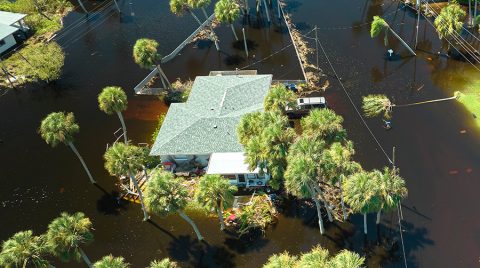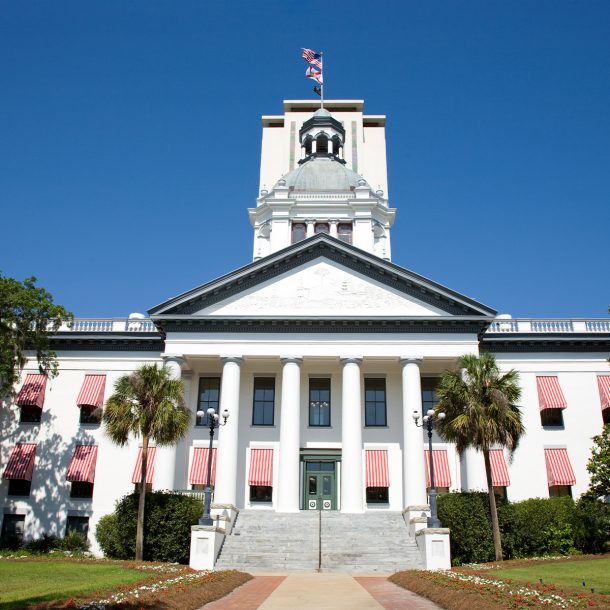-
Property & Casualty
Property & Casualty Overview

Property & Casualty
We offer a full range of reinsurance products and the expertise of our talented reinsurance team.
Trending Topics
Publication
Engineered Stone – A Real Emergence of Silicosis
Publication
Use of Artificial Intelligence in Fire Protection and Property Insurance – Opportunities and Challenges
Publication
Generative Artificial Intelligence and Its Implications for Weather and Climate Risk Management in Insurance
Publication
Public Administrations’ Liability – Jurisprudential Evolution, Insurance Implications, and a Comparative Analysis Across Countries
Publication
Risk Management Review 2025
Publication
Who’s Really Behind That Lawsuit? – Claims Handling Challenges From Third-Party Litigation Funding -
Life & Health
Life & Health Overview

Life & Health
We offer a full range of reinsurance products and the expertise of our talented reinsurance team.
Training & Education
Publication
AI Agent Potential – How Orchestration and Contextual Foundations Can Reshape (Re)Insurance Workflows
Publication
Diabetes and Critical Illness Insurance – Bridging the Protection Gap
Publication
Group Medical EOI Underwriting – Snapshot of U.S. Benchmark Survey
Publication
Why HIV Progress Matters
Publication
Dying Gracefully – Legal, Ethical, and Insurance Perspectives on Medical Assistance in Dying Moving The Dial On Mental Health
Moving The Dial On Mental Health -
Knowledge Center
Knowledge Center Overview

Knowledge Center
Our global experts share their insights on insurance industry topics.
Trending Topics -
About Us
About Us OverviewCorporate Information

Meet Gen Re
Gen Re delivers reinsurance solutions to the Life & Health and Property & Casualty insurance industries.
- Careers Careers
Florida Property Tort Reforms – Evolving Conditions

September 24, 2025
Jessica Clarke
Region: North America
English
Florida’s property insurance market has been through the wringer. Between spiraling litigation, insurer insolvencies, and premium spikes, it reached a breaking point by 2022. In response, lawmakers passed significant tort reform packages in 2022 and 2023 aimed at curbing systemic abuse and stabilizing the market.
We’re starting to see the first signs of recovery, but there is still work to do. The same forces that helped drive the crisis – plaintiff’s attorneys groups, litigation mills, and third-party litigation funding – haven’t gone away. They’re just evolving.
Here’s a look at what’s changed, what’s working, and why the reforms still matter, especially from a property claims perspective. While the legal landscape may have shifted, the real test is how the reforms play out at the claims level, where policies are interpreted, how expectations are managed, and whether disputes are either resolved or escalated.
The Reforms
The 2022 and 2023 Florida legislation took direct aim at lawsuit volume and legal cost drivers directly impacting property claims handling:
- One-way attorney fees were eliminated for property insurance disputes. Previously, plaintiffs’ attorneys were guaranteed their fees if they won – even minimally – while insurers bore the cost, a system widely viewed as incentivizing questionable lawsuits.
- Assignment of Benefits (AOB) for property claims was effectively banned. AOB had become a vehicle for contractors and attorneys to take over claims and pursue litigation in the place of the policyholder, sometimes without the policyholder even knowing.
- Bad faith litigation thresholds were raised, making it more difficult for routine or technical missteps in the claims process to be turned into large-scale lawsuits. The intent was to create a clearer legal distinction between a genuine bad-faith action and a simple claims handling dispute.
- The claim filing window was shortened from two years to one year, reducing long-tail exposure and allowing claims teams to close events with more certainty.
These reforms didn’t fix everything, but they sent a message: Florida wasn’t going to keep rewarding legal system abuse in property claims.
What’s Working – Claims Teams are Seeing the Impact
Finally, the numbers are starting to tell a better story:
- Personal insurance litigation in Florida fell nearly 25% in the first half of 2025, compared to the same period the year prior, according to the Florida Office of Insurance Regulation (OIR), as reported by Insurance Business America in July.1
- That follows a 23% drop in litigation from 2023 to 2024 and a total decline of 36% since 2021, based on the same OIR dataset.
- Insurers are responding: Some have held rates steady or even filed for rate reductions.
- New carriers are entering the market and existing ones are expanding.
- Citizens Property Insurance Corp., the Florida government-run nonprofit insurer of last resort, is shrinking as more risk returns to the private sector.
From a property claims perspective, one of the biggest changes is the reduction in late-emerging claim activity, especially on older catastrophe events. Claims used to reopen months – or even years – after an event, often due to litigation delays, last-minute filings, or public adjuster involvement. But Florida’s recent tort reforms, like Senate Bill 2‑A, have tightened timelines by introducing a one-year deadline for new or reopened claims and an 18‑month deadline for supplemental claims. This change is helping insurers address claims more promptly, resulting in fewer late surprises and a smoother claim process overall.
In sum, the data shows that the reforms helped to change the legal landscape in Florida. There is enough data over enough time to demonstrate that these changes are not a fluke.
The Pushback – Trial Lawyers Aren’t Yielding
Let’s be clear: Before the recent Florida tort reforms, trial lawyers and public adjusters had a highly profitable playbook. With that model disrupted, the trial bar is now pushing to reverse course, challenging reforms in court and leaning on lawmakers. Here’s how that fight is playing out.
- Legal challenges – Several lawsuits are challenging the reforms, alleging that eliminating one-way attorney fees and restricting AOBs are eroding policyholder protections. These suits claim the changes could discourage some homeowners from pursuing claims due to increased legal and financial hurdles. While the courts will ultimately decide the merits, the broader strategy appears aimed at re‑opening pathways for fee-driven litigation.
- Lobbying efforts – Advocacy groups are intensifying their efforts, especially with elections on the horizon. For example, the “homeowner rights” narrative is being revived to reframe litigation rollbacks and reintroduce loopholes under the guise of consumer protection.
- Evolving litigation tactics – With AOBs no longer viable, some plaintiff firms are now going straight to policyholders and public adjusters, promoting lawsuits as a first-line response rather than a last resort. This shift increases legal exposure earlier in the claims cycle.
The methods may look different, but the intent hasn’t changed. The playbook is being rewritten for a new set of rules.
Third-Party Litigation Funding – Fueling the Litigation Engine
Third-party litigation funding (TPLF) has become one of the most persistent drivers of Florida’s litigation problem. Private investors – often hedge funds or litigation finance firms – bankroll lawsuits in exchange for a share of the payout. Globally, the industry now manages over $15 billion in assets, much of it targeting insurance-related disputes.2
- TPLF has become a major factor in mass property claim litigation but remains largely unregulated in Florida.
- These funders are not public, and disclosure laws don’t require transparency around who’s backing a lawsuit or influencing settlement strategy.
- The resulting lawsuits are driven by return on investment, not the merit of the claim. TPLF drives up overall claim costs – well beyond just legal fees – and can make the claim resolution process more adversarial. Even when a claim is handled reasonably, handlers may be second-guessed or threatened with a lawsuit because the endgame is no longer just resolution of the claim – there is a financial return to consider.
When litigation turns into a financial strategy, claims handling stops being about solving problems and starts being about posturing. Instead of working together to resolve a dispute (e.g., was there damage? Is it covered? What’s a fair settlement?), everything becomes part of a legal playbook. And when third-party funders get involved, it changes the dynamic even more.
These aren’t policyholders trying to get back on their feet. These are outside investors looking for a return. That means pushing claims longer, inflating demands, and creating pressure, not because the claim calls for it, but because the lawsuit might be more valuable than the actual loss. That’s not claims handling. That’s a game. And it breaks the trust insurers work so hard to build with policyholders.
Florida is not the only state dealing with this. Georgia, for example, passed sweeping tort reform earlier this year – Senate Bills 68 and 69 – to crack down on litigation abuse, especially in property claims.3 Georgia was faced with issues similar to those faced in Florida: too many lawsuits, messy timelines, and outside players disrupting the claims process. When third parties take over the process, it is not just inefficient, it breaks down fairness, slows resolution, and creates even more noise in a system that’s already stretched.
Florida, for its part, has floated additional legislation aimed at increasing transparency around third-party litigation funding. The legislation didn’t move forward this year, but the fact that it’s on the radar tells us something: even after sweeping reform, the work isn’t done.
States are beginning to realize that unchecked litigation funding isn’t just a technical problem; it disrupts the claims process itself. It complicates communication, delays resolution, and inserts outside interests into decisions that should be guided by coverage and facts. When the focus shifts from indemnity to investor return, the whole point of the claims process – fair and efficient claim resolution – starts to erode.
Why This Still Matters – Especially for the Claims Process and the Teams Handling Them
If these reforms are undone or quietly eroded, we risk returning to the environment that overwhelmed the claims system in the first place, where litigation was the default rather than the last resort. That’s not only costly, it’s chaotic for claims professionals trying to close files, manage expectations, and do right by policyholders.
- Fewer carriers mean less competition and higher premiums, leading to more pressure on claims to justify settlements and defend decisions.
- A surge in questionable or frivolous property litigation is straining the system as more inflated or marginal claims are entering the pipeline, especially in high-dollar hurricane-related cases. This drives legal friction, slows claim resolution, increases operational strain, and contributes to burnout and turnover in claims roles.
- Frequent reopening and inflated demands increase workloads and force more oversight, requiring adjusters to spend more time reworking files, defending prior decisions, and trying to maintain consistency under pressure. It slows everything down, adds layers of review, and stretches already maxed-out teams even thinner.
When insurers’ claims departments are bogged down by legal maneuvering, nobody wins. Policyholders get frustrated, claims drag out, and the system loses credibility.
What Can Insurers Do Going Forward?
- Insurers can stay involved and speak up when new legislation threatens to undo the progress that’s been made.
- Insurers can make sure agents, brokers, and policyholders understand how these reforms support a more stable and fair claims process.
- Insurers can be clear in communications, especially with policyholders. Education is critical. Policyholders need to know exactly what their coverage does and doesn’t cover, how the claims process really works, and who to talk to if things “go sideways”. When policyholders don’t understand, they become frustrated. Clear communication can stop disputes before they start.
- On the claims side, insurers need to provide sufficient documentation, stick to reasonable timelines, and communicate. A well-documented file – with timely correspondence and prompt, accurate claim payments – goes a long way. These details aren’t just good practice; they can become evidence in litigation.
- Insurers need to watch out for red flags. For example, if insurers see a pattern, such as repeat players or tactics that are more about leverage than resolution, they need to call it out and share that knowledge. Policyholder advocates and the trial bar are well organized, and they share data constantly. As an industry, especially in claims, insurers need to do a better job of sharing insights and learning from each other. Insurers can’t continue to operate in silos while the other side works together and keeps gaining ground.
- Insurers should push harder for transparency around third-party litigation funding. If there is a party with an interest in the resolution of the claim, policyholders, insurers, and claims teams deserve to know who’s pulling the strings. That means supporting laws that require disclosure of funding sources and limits on funder involvement: Without that, it’s nearly impossible to manage risk or reach fair outcomes.
The Bottom Line
Most importantly, property claims should be handled with clarity, consistency, and transparency. That means communicating early and often, setting expectations up front, and avoiding vague language or delays that create openings for disputes. Every file should be documented thoroughly and treated as if it could end up in litigation – even if we hope it never does.
Florida’s tort reforms have started to move the needle, but they’re under real attack from well-funded interests and a legal industry still hunting for cracks to exploit. If insurers want a stable, competitive property insurance market in Florida, protecting these reforms isn’t optional, it’s critical. The insurance industry should continue working to make sure Florida remains open to new carriers, driving competition and keeping premiums affordable for Florida policyholders.
There is positive momentum. Let’s not lose it – or worse, give it away.
Endnotes
- Recamara, J., “Florida insurance litigation falls 25% in 2025 – report,” Insurance Business, July 18, 2025, https://www.insurancebusinessmag.com/us/news/breaking-news/florida-insurance-litigation-falls-25-in-2025--report-543074.aspx
- U.S. Chamber of Commerce Institute of Legal Reform, “What You Need to Know About Third-Party Litigation Funding,” June 7, 2024, https://instituteforlegalreform.com/what-you-need-to-know-about-third-party-litigation-funding/
- Tim Fletcher, “Georgia Passes Sweeping Tort Reform Legislation,” Gen Re, April 28, 2025, https://www.genre.com/knowledge/publications/2025/june/georgia-passes-sweeping-tort-reform-legislation-en





